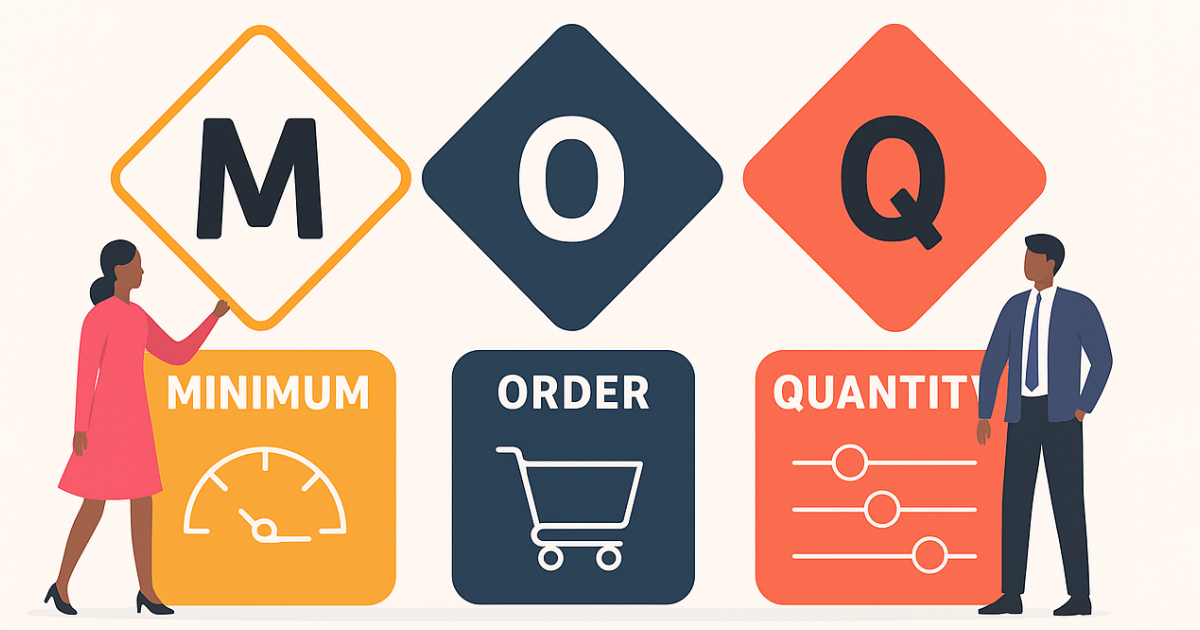
Understand how the Minimum Order Quantities (MOQs) from button suppliers, including makers of corozo buttons, slimmer styles of wood buttons, or any sustainable button that can fit into costing, supply chain management strategy, buying, and development workflows.
Chetna International can provide a variety of buttons with different types of materials. Therefore, Chetna International can deliver products with minimum order quantities.
What Is MOQ, and Why Are MOQs Important in the Button Supply Chain?
MOQ, or Minimum Order Quantity, is the least number of units a supplier will accept on each order. MOQs are particularly important when dealing with costs in production, wholesale, and retail selling situations where they are required to maintain profit margins.
Button manufacturers (be it carving biodegradable corozo buttons, rustic-looking wood button styles, or one of many sustainable buttons) must deal with the essential costs of setup costs, material acquisition, and labor. MOQs allow button manufacturers the ability to recoup these costs and keep production sustainable.
Considering button production costs such as tooling, final assembly, quality inspections, and delivery, an MOQ means an order covers each of these fixed costs and the gross profit margin.
The cost per corozo button, or any wood button inventory, is far lower than producing the same volume of buttons separately. Suppliers rely on the MOQs to achieve something close to this scale effect.
An MOQ also helps the supplier organize their inventory and their production scheduling, especially for custom or seasonal styles, and avoids flooding their production with overstock or underutilizing anyone's production capacity.
There are different ways to structure MOQs in the button industry.
Quantitative MOQs: For example, you order a minimum of 500 pieces per order.
Cost-based MOQs: For example, you order a minimum of ₹50,000 per order irrespective of the cost per piece by unit count.
Tiered MOQs: for example, the higher the volume, the lower the price, to encourage the buyer to buy additional items.
Time-based MOQs: for example, you buy a minimum quantity within a month, or put another way, a minimum quantity within a season to balance manufacturing flow by demand.
Capital Tied Up: Where the MOQ value is high, this will inhibit small-scale businesses from committing to the up-front costs.
Too many sustainable buttons or niche styles could take a while to sell, and holding costs are assuming there is unnecessary inventory created.
Strong planning on customary order lead times being secured with demand forecasts in mind, or maybe a split shipment if the supplier agrees to this as a course of action.
Control on ordering in volumes: Making supply in larger batches allows the supplier to exercise full capacity, improve efficiency, and reduce costs associated with administration.
Cash-flow stability: a steady provision of MOQ orders means the supplier has some reasonable expectation of production cycles and sale patterns they can rely on.
Suppose a small brand wants a batch of corozo buttons (eco-friendly, made from nut material). The supplier’s MOQ may be 1,000 units, but the brand negotiates 500 at a higher per-unit price to test market response. Over time, as volumes grow, they shift to full MOQ orders for better pricing and cost-efficiency.
While the minimum order quantity is set by the supplier, the Economic Order Quantity (EOQ) model enables buyers to calculate optimal order quantities to minimize combined ordering and holding costs.
In the button industry, MOQs frequently exceed EOQ, making buyers deal with the reality that for them to minimize their inventory costs, they have to balance and comply with supplier MOQ requirements.
By understanding Minimum Order Quantities (MOQs), buyers and button suppliers in India can match production, cost, and sustainability when it comes to the button industry.
Knowledge of the MOQ allows you to make smarter choices whether you are sourcing corozo buttons, wood button styles, or sustainable buttons.
At Chetna International, we are here to assist you, and we reach out to see what we can do to maximize your MOQ strategy today.